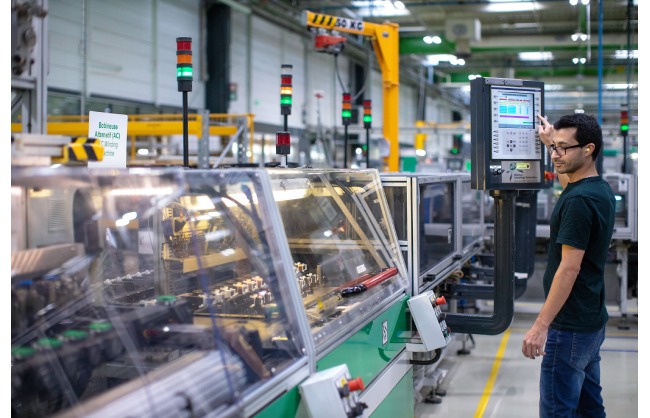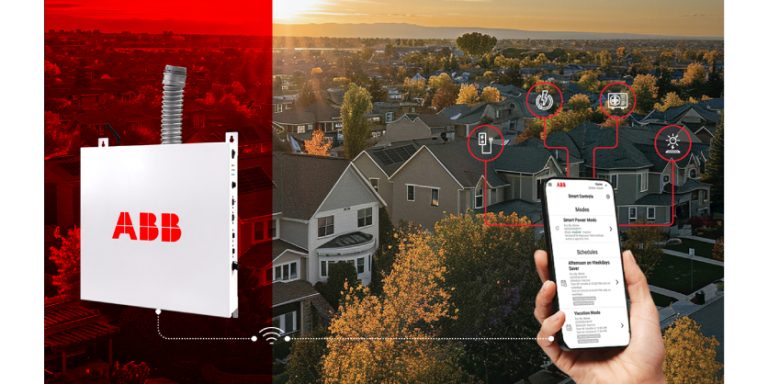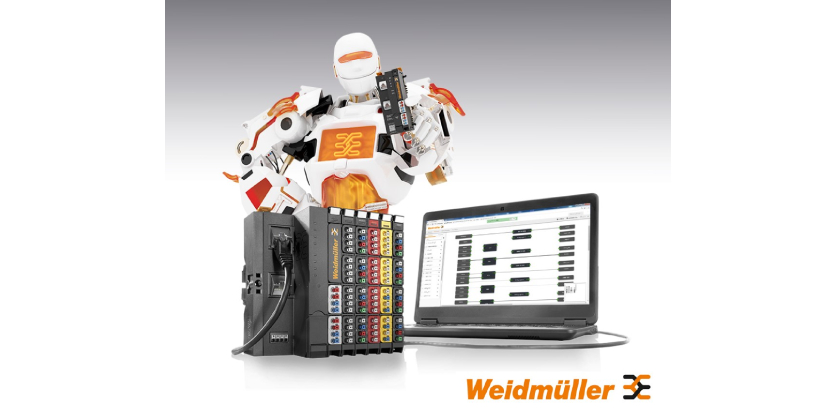Schneider Electric Canada’s Agentic AI Ecosystem to Redefine Sustainability and Energy Management
July 31, 2025

By Krystie Johnston
As pressure mounts on companies to meet net-zero targets and provide transparent sustainability reporting, the need for intelligent, adaptive solutions has never been greater. In response, Schneider Electric Canada is introducing their agentic AI ecosystem – a transformative approach to driving sustainability and operational efficiency through autonomous, context-aware technology. In this article, Hugo Lafontaine, Vice President of Automation, Energy, Digitalization, and IoT at Schneider Electric Canada shares insights on this initiative.
Why the pressure for sustainability reporting?
Today, organizations are under unprecedented pressure to decarbonize, improve efficiency, and deliver transparent, verifiable sustainability reporting. This pressure comes from multiple fronts: regulatory bodies, investors, consumers, and internal stakeholders. These rising expectations are coupled with a rapidly changing environment marked by climate change and resource constraints. Lafontaine says that traditional tools simply cannot keep up. “That is why we are investing in a new category-defining ecosystem, one that embeds intelligent automation and collaborative AI to help companies navigate this complexity and achieve measurable, lasting impact.”
Lafontaine says that a major challenge he sees companies struggle with is fragmentation. “Companies are often relying on disconnected tools and siloed data sources, making it difficult to understand, act on, and report sustainability performance with confidence. There is also the issue of scale. Managing energy, emissions, and resources across large and complex operations requires more than manual processes or static software,” he says. “That is where our agentic AI ecosystem comes in – helping organizations connect the dots across operations, strategy, and reporting.”
The vast amount of data
Collecting and contextualizing sustainability data has been cited as a major challenge for companies to achieve successful reporting strategies. Lafontaine says that most companies are collecting this data, but few are truly leveraging it. “The data is often locked in spreadsheets or siloed in systems, disconnected from real-time decision making. What is missing is contextualization, turning raw data into meaningful insights that can inform strategy,” he says. “That is why agentic AI is such a game changer. It does not just collect data – it interprets it, makes recommendations, and can even act in alignment with an organization’s decarbonization goals.”

For a company to navigate sustainability reporting successfully, Lafontaine says they have to go beyond compliance. “It requires real-time visibility across emissions, energy use, and value chains. It requires the ability to benchmark performance, run scenario analyses, and respond proactively,” he says. “Our new ecosystem builds on capabilities from Schneider’s existing platforms and our recent acquisition of EcoAct to support all these functions. This ensures companies are not just reporting, but also transforming operations to meet future sustainability demands.”
Where Schneider Electric Canada comes in
Schneider Electric Canada has a strong legacy in artificial intelligence (AI) innovation. “We have developed the Resource Advisor Copilot to deliver enterprise sustainability insights, we launched a global AI hub that saved over $15 million in operational optimization, and we hold more than 18 AI patents. Our strategic partnership with NVIDIA is another example where we are working to scale sustainable, AI-optimized data centre infrastructure,” Lafontaine says. “These efforts reinforce our commitment to pairing digital innovation with responsible resource use.”
Schneider’s mission is to bridge progress and sustainability for all by empowering all to make the most of their energy and resources. And Lafontaine says AI – especially agentic AI – is a powerful tool to help organizations to do more with less. “By embedding AI into workflows and systems, we are giving companies the intelligence they need to operate efficiently, reduce emissions, and meet their sustainability commitments. All while freeing up human experts to focus on high-impact strategic work.”
Agentic AI
So, what is agentic AI, and how is it different from AI? Lafontaine explains that agentic AI represents an evolution beyond traditional AI systems. “While conventional AI processes information and responds to specific instructions, agentic AI actively pursues goals with greater autonomy and flexibility. The key distinction lies in how agentic AI operates [emphasis added],” he says. “Traditional AI excels at specific tasks it is trained for, like analyzing data, making predictions, or classifying information. But agentic AI builds upon these capabilities by adding crucial dimensions.”
Agentic AI can think rationally about problems and develop multi-step plans to solve them. It maintains persistent memory and learns from experiences to improve over time. Agentic AI can navigate novel situations by applying general knowledge compared to AI that relies solely on training data, and it selects and combines different capabilities as needed to address specific challenges. “Think of AI as a specialized tool designed for particular tasks, whereas agentic AI functions more like an intelligent assistant that can understand broader objectives, adapt to changing circumstances, and take initiative within defined parameters,” Lafontaine says.
Finally, a tool for that
With these distinctions in mind, it becomes clearer why Schneider’s agentic AI ecosystem is poised to redefine sustainability and energy management. Lafontaine says that agentic AI can serve as a valuable complement to human expertise in sustainability reporting by handling complex tasks, allowing professionals to focus on other strategic elements. “The fundamental advantage is in the division of labour. AI can process and analyze large volumes of data efficiently, while human experts provide critical context, judgement, and decision-making.”
Lafontaine says that this collaborative approach means sustainability professionals can dedicate more time to strategic priorities and innovations rather than data processing. “It is important to emphasize that our vision is that of augmentation, not replacement. The AI supports and enhances human capabilities rather than substituting for them,” he says. “What distinguishes our approach is how we are embedding relevant domain expertise into these AI systems, ensuring they operate with appropriate context and align with business objectives.”

With Schneider’s agentic AI ecosystem, the goal is to create tools that understand sustainability concepts and requirements that, with human guidance and oversight, will enhance and improve resource management. Lafontaine says, “As sustainability reporting continues to evolve in complexity and importance, this human-AI collaboration allows organizations to maintain high-quality reporting while scaling their sustainability initiatives more effectively.”
The benefits and an example
There are many benefits that end users will be able to take advantage of. “The agentic AI ecosystem will allow for continuous optimization, real-time responsiveness, and integration across enterprise systems,” Lafontaine says. “This means better decision making, faster execution, and measurable progress on energy and emission goals. It also ensures scalability. Organizations can grow their sustainability programs without proportionally increasing complexity.”
Lafontaine explains how a company can leverage Schneider’s new agentic AI ecosystem to augment their sustainability reporting by looking at one example. He says the ecosystem incorporates functions like emissions management, value chain engagement, scenario analysis, and compliance reporting. “For example, an embedded AI agent could identify inefficiencies in energy usage across a global supply chain and automatically recommend, and even initiate, corrective actions. It is about turning static reports into dynamic, actional insights that drive real-world outcomes.”
A thorough and objective evaluation

Schneider’s agentic AI ecosystem promises a lot, but is it too good to be true? There must be a catch, right? One may question how the energy needs this ecosystem requires are justified by the energy savings it might achieve. Lafontaine says this question gets to the heart of responsible AI deployment. “There is indeed a lot of tension between AI’s energy consumption and its application for sustainability,” he says. “We approach this as an optimization challenge with several important considerations.
“First, we must evaluate AI’s impact through a lifecycle analysis comparing the energy used in training and running models against the energy saved through their application,” he explains. Lafontaine says that when AI optimizes industrial processes or building systems that would otherwise run inefficiently for years, for example, the net environmental benefit becomes substantial. And this is not the only metric they consider.
“Second, we are addressing AI’s energy footprint directly through several approaches,” he says. These approaches include deploying more efficient, purpose-built domain-related models (rather than using oversized, general models for specialized tasks), utilizing edge computing where appropriate to reduce data centre dependencies, running workloads in regions where, and at times when the electrical grid is cleaner, and applying their own energy management solutions to the data centres that host these systems.
And finally, they consider the nature of electrical infrastructure itself, and experts agree digital tools like Schneider’s agentic AI ecosystem are needed.
“Third, the complexity of modern energy systems – with distributed generation, storage, and dynamic markets – requires sophisticated optimization, which AI is typically good at,” Lafontaine says. “The International Energy Agency and other authorities recognize digital technologies as essential enablers of the energy transition.”
Lafontaine says that at Schneider, they see AI as a critical tool whose environmental return on investment must be carefully managed. And that by being transparent about these trade-offs, and continuously improving efficiency, they are working to ensure the sustainability benefits outweigh the computational costs. And, they carefully consider other factors about agentic AI, like its autonomy, the other side of a coin. Yes, it is great that agentic AI can act independently, but is there a danger in that?
“Trust will be earned with time if one keeps on doing the right things,” Lafontaine says. “AI can make independent decisions, but only within parameters established by human experts, similar to delegated authority with clear constraints. We ensure appropriate decision-making through three approaches: embedding domain expertise and values during development (to drive fairness and curb bias), implementing explainability features so the AI can articulate its reasoning, and designing [it] for human collaboration rather than replacement.”

Lafontaine says that human oversight remains essential throughout, from initial training and validation to ongoing monitoring and regular auditing. “Critical decisions – especially those with significant impact – include mechanisms for human review before implementation. Our philosophy balances autonomy with accountability, creating systems where technology amplifies human capability while maintaining appropriate guardrails and oversight.”
Multi-year initiative on a global scale
For Schneider, this initiative is a long-term, strategic investment aligned with their mission and growth model. Lafontaine says they see it as a critical investment in the future of sustainable operations. “Our goal is to provide scalable, integrated solutions that deliver measurable ROI – whether through efficiency gains, emissions reductions, or enhanced regulatory compliance.” Developing their agentic AI ecosystem is also the result of the collaboration with other experts and companies across domains.
Lafontaine says that this initiative builds on Schneider’s broad ecosystem of partners across AI, energy management, and sustainability. “For example, our work with NVIDIA, the integration of EcoAct’s expertise, and the collaboration across our global AI hub, have all contributed to the scope and depth of the ecosystem. It is a collective effort focused on delivering scalable, real-world impact.”
And it builds on Schneider’s legacy of being a global specialist in energy and automation. “It comes down to experience and execution,” Lafontaine says. “We have spent decades helping thousands of organizations across the globe meet their sustainability and energy goals. We combine deep domain expertise with cutting-edge technology and a proven track record of innovation. Our recognition as the world’s most sustainable company by Corporate Knights and our leadership in ethics and digital transformation speak to that.”
Lafontaine says that this multi-year global initiative will be rolled out in phases to ensure scalability and effectiveness. “While we cannot share specific release dates just yet, our roadmap includes integration with existing Schneider platforms and expanded features from EcoAct. We anticipate early adoption across industries with complex sustainability demands, such as manufacturing, infrastructure, and data centres.”
Conclusion
This is not just a tech story. It is a transformation story. Schneider is building a system that redefines how sustainability and energy management are done. By embedding intelligence into every layer of the operation, they are giving organizations the power to act decisively, strategically, and responsibly. At a time when the world needs it the most.

About Hugo Lafontaine, P, Peng., MBA, Vice President, Industry at Schneider Electric Canada
Hugo Lafontaine is a highly accomplished professional with over 20 years of experience in the Automation industry. At Schneider Electric Canada, he is responsible for industrial products and software, overseeing a wide range of operations across the country.
Interested in learning more? Visit Schneider Electric Canada today
Related Story
Schneider Electric Announces Multi-Year Initiative Building an AI-Native Ecosystem for Sustainability and Energy Management
Schneider Electric, a leader in the digital transformation of energy management and automation, announced on May 26 a landmark multi-year initiative dedicated to building a new kind of integrated ecosystem for sustainability and energy management, backed by a significant growth model that represents the company’s commitment to forward-thinking software and innovation.






